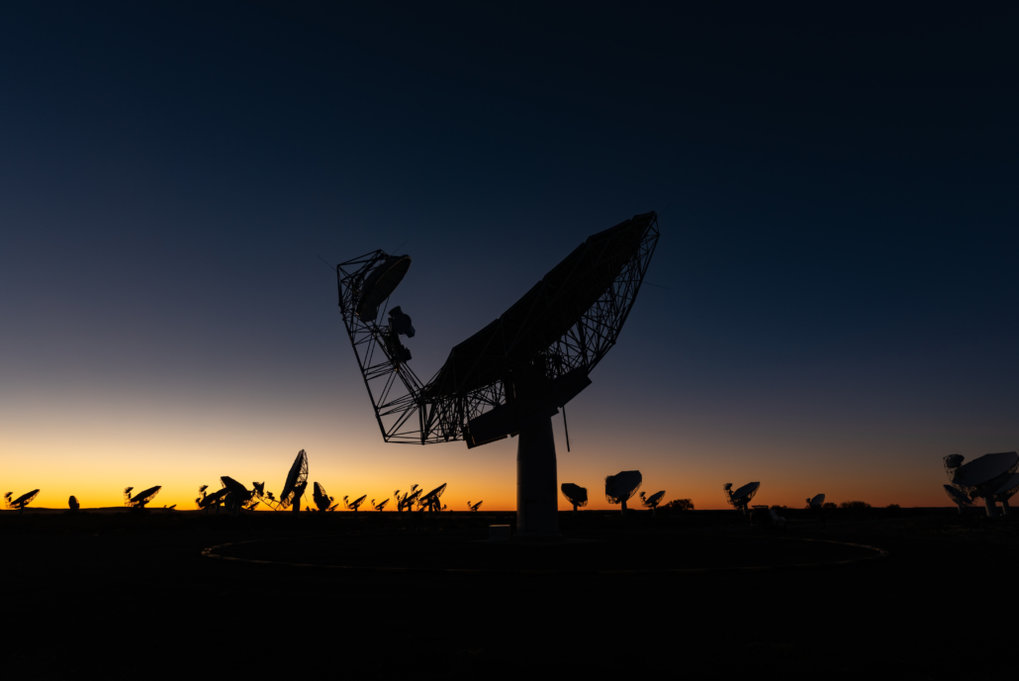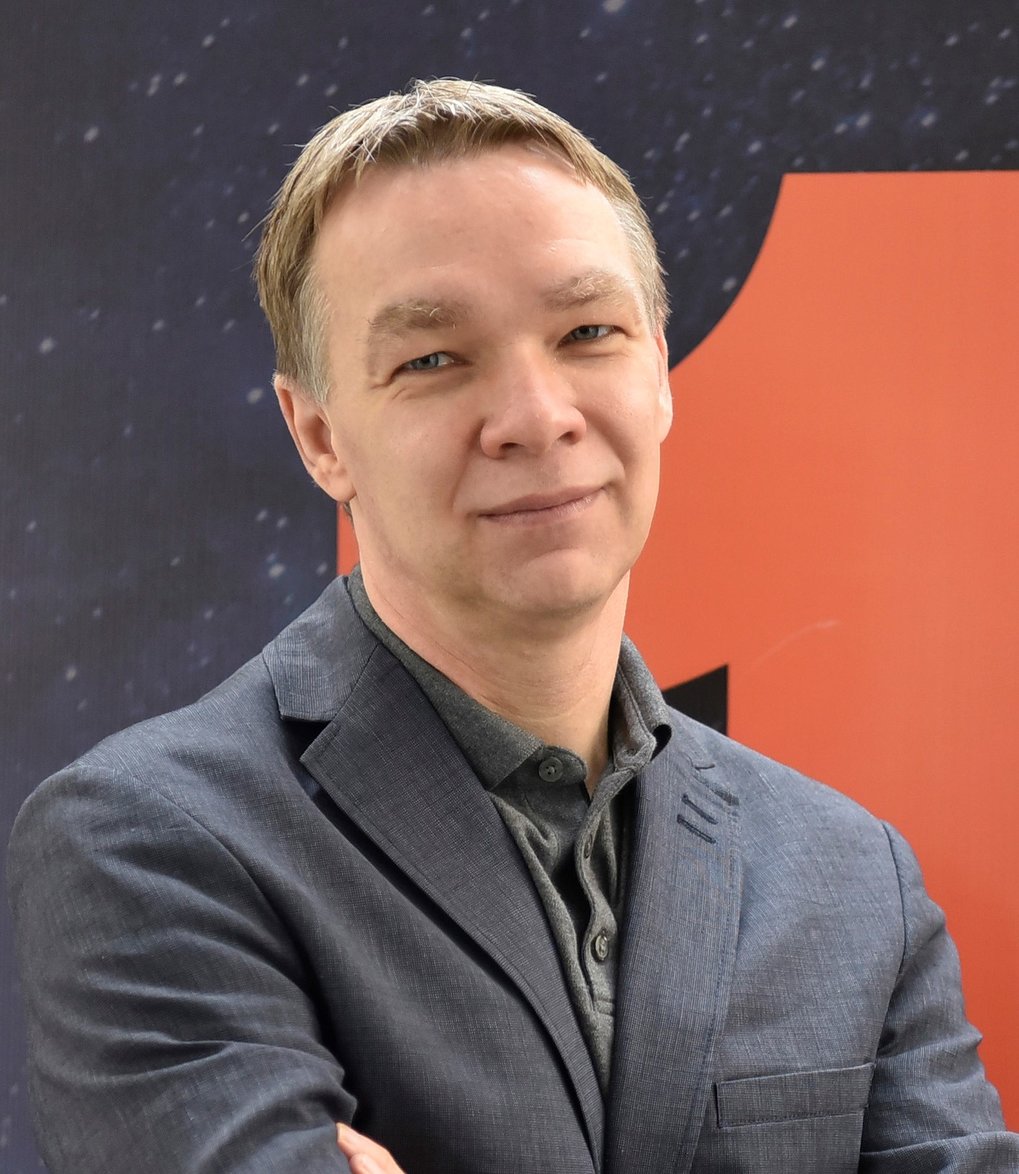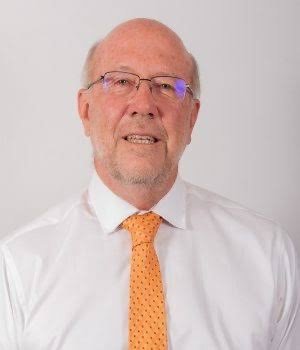Both partners, Germany and Southafrica, benefit from the MeerKAT collaboration
The Max Planck Society is investing 20 million Euros in the expansion of the radio telescope MeerKAT in South Africa, which will also be the nucleus of the Square Kilometre Array (SKA). SKA will be built in South Africa and Australia and, with a total area of eventually one square kilometre, will capture radio waves in the southern sky. We talked to Robert Adam, Managing Director of the South African Radio Astronomy Observatory (SARAO), and Michael Kramer Director at the Max Planck Institute for Radio Astronomy, about the scientific successes and goals of MeerKAT, the status of SKA and the prospects for science in South Africa and other countries in southern Africa.

Prof. Kramer, Dr. Adam, which scientific highlights have been achieved with MeerKAT so far?
Kramer: Already the first image of MeerKAT was the most detailed and most impressive image of our Galactic centre so far. MeerKAT has thus already proven that it is the best radio telescope currently available in the world. We have also already discovered several pulsars in globular clusters, which we are now investigating more closely. But we are only at the beginning and are very much looking forward to what we all can do with MeerKAT in the future.
Adam: MeerKAT was only commissioned in mid-2018. In the beginning we first had to get the technology up and running to add the signals from the various antennas coherently – this is an unruly electronic monster. Nevertheless, there were already a number of highlights, for example insight into the jets emerging from the centres of various galaxies. But the large survey projects, for which MeerKAT is particularly well suited, have only just begun.
What insights do you hope to gain from the survey projects?
Adam: Two projects are about pulsars, which emit radio signals at very regular intervals, about their discovery and their timing. In other projects we are creating maps of the neutral hydrogen distribution. Hydrogen is the most common element in the Universe. Its distribution tells us a lot about the structure of the Universe, both on a cosmological and galactic scale. In addition, we study exoplanets orbiting nearby stars, or giant cosmic magnetic fields that still leave us with great mysteries.
What benefit do you expect from the expansion by twenty antennas?
Adam: Not only the sensitivity will increase considerably, but also the resolving power of the telescope will be much better. On the South African side we will equip the antennas with receivers, which will be able to map neutral hydrogen with higher resolution. Our German partners will also install “S-band” detectors on the new antennas, just as they have done with the existing telescopes.
What are these “S-band” receivers for?
Kramer: These receivers allow us to measure at slightly higher frequencies and therefore to look much deeper into our Galaxy – at lower frequencies the interstellar medium obstructs our view somewhat. So we can search for pulsars or observe chemical reactions. We are planning projects that will have a legacy value even when the even larger SKA, the Square Kilometre Array, comes along.
Germany has not officially participated in SKA since 2015, but is still represented by the Max Planck Society? What is the status of this project?
Kramer: The Max-Planck Society is currently acting in the kind of a placeholder role for German community in the SKA project. The society is negotiating right now how German scientists can benefit from the MPG contributions to the SKA.
Adam: The Covid 19 pandemic has slowed the process of setting up the SKA Observatory somewhat, mainly due to travel restrictions. In general, SKA as a multilateral project is more difficult to coordinate than MeerKAT. I have the feeling that the effort for such processes increases quadratically with the number of partners: Not everyone has the money available at the same time, the scientists have promised their governments different things in some cases – you have to take all this into account if you want to get such a project off the ground. You often have to make compromises and cannot simply decide. But we are still on the right track. I think that as soon as the host countries Australia, South Africa and Great Britain as the largest donors have agreed, many things will become easier. China and Italy are also involved, and Germany will hopefully be involved again soon.
Kramer: The good thing is that SKA is a modular system. That’s why you can add antennas step by step. Similar to what we are doing now with MeerKAT. Even if there were not sufficient money at the beginning for the complete expansion, you can already build a telescope that is unique. Then you can add more dishes to telescope when more partners join.
Adam: It is definitely an advantage of radio astronomy that you can build our telescopes step by step. In comparison t it’s very difficult to build half an optical telescope.
To what extent do your two organisations benefit from the cooperation?

Kramer: The Southern hemisphere is very interesting for radio astronomy, but there was no radio telescope of this size before MeerKAT. This very sensitive and versatile instrument opens up completely new possibilities for science in terms of sensivitiy and resolution. To be involved in this means what the Max Planck Society stands for: the attempt to push the limits of the possible again and again and thereby gain insight.
Adam: In optical astronomy we have always been quite strong, but in radio astronomy our country is still a newcomer. That is why working with German colleagues on the expansion of MeerKat is highly beneficial for us, because we can build on their scientific experience. This will also help us to build SKA. And we are grateful for the unbureaucratic, cooperative manner of our German colleagues: We solve problems and do not look for ways to fall over them – an experience that we have encountered differently in other cooperations.
Kramer: Apart from the science, we are always impressed by the smart out-of-the-box solutions that South African engineers come up with. For example, South African colleagues have developed hardware to combine all the telescopes’ data. It is now used more or less in this form in many other telescopes around the world, for example in our telescope in Effelsberg, and this even before we decided to join MeerKAT. The exchange of experiences and ideas therefore goes in both directions.
What significance do MeerKAT and later SKA have for science in South Africa and beyond?
Adam: After we left apartheid behind, we had the opportunity to reinvent many things. Before that there was a boycott of scientific institutions, as well as of trade and other things. Now we could suddenly cooperate internationally, especially international investment in our science became possible. So we thought about what could attract scientists from Germany or the USA to South Africa, not as a donor country, but as a country looking for benefits for its own research. That’s how we came to astronomy, because it’s always helpful to look at the Universe from different parts of the world. So we wanted to become hosts for different large telescopes. That’s why we first built the South African Large Telescope, an optical telescope, and then, in Namibia, which belonged to South Africa until 1990, we collaborated in the construction of the the gamma-ray telescope HESS. At SKA we also use international interest and international investment to support South African science and business. We told our cabinet: If you put your money into intelligent people in a great project, you will get more than the project. Silicon Valley would not exist without the Apollo project either. There is a whole range of transfers across disciplines. We can’t tell you what effect it will have, but it will have an effect. And in dealing with Big Data, a key technology not only for astronomy, but for a whole range of areas, we are actually pushing development forward today.
Kramer: There is another good example of a very recent technology transfer: SARAO engineers were hired to build ventilators for the therapy of Covid-19. This shows that people are acquiring skills in our research that are useful for society.

Adam: Of course we chose the Karoo area for MeerKAT because only a few people live there as dense populations are not compatible with astronomy. In radio astronomy, for example, there is interference from mobile phones. But of course there are also people in the Karoo region who, until the start of the MeerKAT project, lived exclusively on agriculture and government aid. We have contributed to diversifying the local economy, for example through hospitality or by selling vehicles and diesel. In addition, it is of course much more sensible to train young people from the area as craftsmen and technicians. An example from the lower tech services: all the workers who splice fibre are from the area. You can start at that level and then hopefully get further qualifications. After all, we have a large scholarship programme for pupils. And for students who finish high school and have good grades in science and mathematics, we pay for busaries.
How do you assess the prospects for science in South Africa?
Adam: South African science has developed in different stages. In the beginning, astronomy actually became big here, but later science focused on our resources: agricultural research, mining science. When we industrialised after the Second World War, the prevailing view was that we should concentrate on research that would help the development of industry. During apartheid, the focus was on security research, nuclear technology and energy security. This is how competences in quite different fields have developed over the decades.
What was the situation after the end of apartheid?
Adam: Overall I am optimistic about science in South Africa. We have strong research institutions and above all good universities. You have to remember that we came out of a phase where the fight for human rights was at stake. And then we told the Finance Minister that we needed money for basic research. That was not easy to sell, given the development agenda in the 1990s and 2000s. But we managed to do so because we attracted a number of large projects such as SKA to our country, which touch on many interests. SKA concerns not only the Ministry of Science, but also the Ministries of Communications, International Relations and Trade. As soon as several ministries are interested in a matter, it becomes much easier to implement it. Platforms such as MeerKAT are advantageous in this respect, which can be used not only by South African research but also by an international scientific community: Then someone else pays the salaries of the scientists. Above all, we have to provide the technology.
Kramer: Our South African colleagues are now living the idea that the Max Planck Society also stands for. You never know what will come out of basic research. There may be major breakthroughs that change the world. Apart from that, it’s also about educating people. Not all of them are going to find a job in science. But young people learn here to solve problems that nobody has solved before, and they can bring that to the table in other places. This is another reason why basic research is so essential for every society and every economy. The South African colleagues have taken this very much to heart.
How do they assess the chance that basic research will become a motor for development in other countries of Southern Africa?
Adam: Basic research can mean very different things: There is basic research in agriculture or in genetics that is relevant to agriculture. But it will certainly be some time before we reach a research density in Southern Africa that is the basis of an innovation-driven economy. Even many better developed countries are not yet ready. And because the density of scientific activity is lower in developing countries, researchers there look less to industry next door rather than to that in the northern hemisphere. This makes the transfer to applications here even more difficult. Another problem with research’s contribution to economic development is that science often concentrates knowledge rather than disseminating it. Even the third industrial revolution, digitalization, which we hoped would make societies more democratic, did not succeed. No one has yet solved the problem of how to transform scientific knowledge into progress that benefits everyone. After all, there have been some breakthroughs in mining technology in South Africa that have created billions of dollars in global value creation. But when it comes to technology transfer, even in South Africa, we are not yet at the point where we would like to be.
Kramer: Of course, none of us believes that astronomy will solve the world’s problems, but we can help at least a little bit. Big Data, for example, is not only a problem for astronomy. But we may already have a little more experience in this field than other disciplines. When our S-band detectors are running, we will produce two petabytes of data every night, which cannot be stored anywhere. In general, the storage of data of any kind will in future account for a considerable proportion of global energy consumption. So we have to try to make computers greener. We are still lucky in South Africa: although MeerKAT is located in a rather remote area, we can simply connect it to the power grid. But for other parts of telescopes like SKA we may have to develop an independent renewable energy supply that is available around the clock.
Interview by Peter Hergersberg








